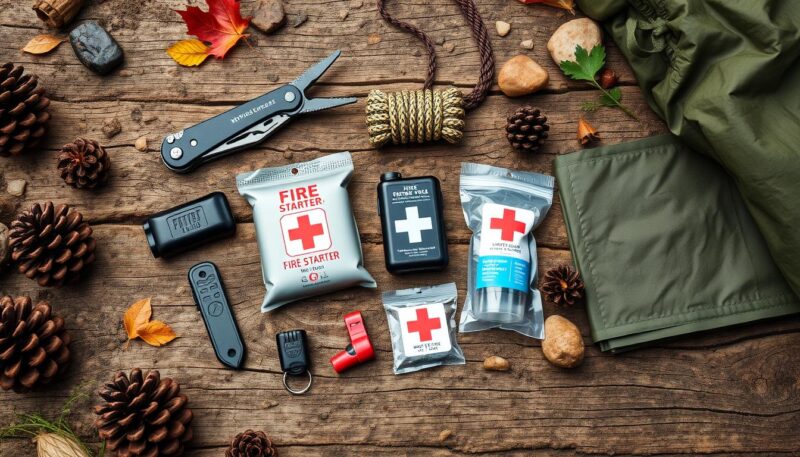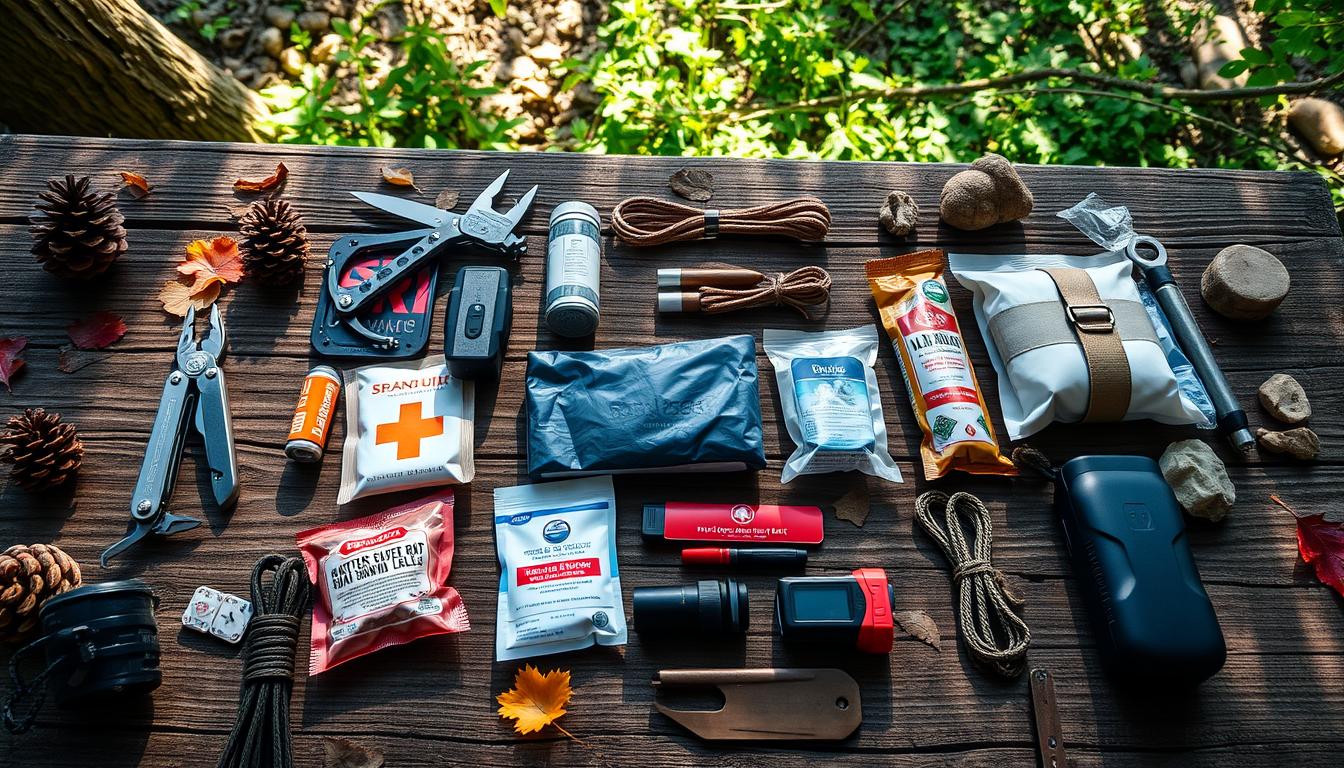When you’re out enjoying the great outdoors, the last thing you want is to find yourself in an unexpected survival situation. It might surprise you to learn that 61% of outdoor enthusiasts report having been in a survival scenario at least once. Whether you’re hiking a local trail or exploring the backcountry, having a well-prepared wilderness survival kit can be a game changer. It’s essential not just for your safety but also for your peace of mind.
Wilderness survival kits are not just a fancy addition to your gear; they are crucial for addressing various emergencies. You may face challenges like sprained ankles, which affect about 30% of hikers, or even get lost during your explorations. Preparing for such contingencies involves understanding your personal limits and the unpredictable nature of the environments you may encounter. So, what should you pack in your wilderness survival gear? And what items can you leave behind? In the following sections, you’ll discover how to create an effective wilderness survival kit tailored to your needs.
Why You Need a Wilderness Survival Kit
Engaging in outdoor activities offers a rewarding experience, yet it comes with inherent risks. Understanding the importance of preparedness is crucial for facing potential challenges while enjoying nature. A well-thought-out wilderness survival kit can significantly improve your chances of safety and survival in unpredictable situations.
Understanding the Importance of Preparedness
Being adequately prepared means knowing what to pack for survival. From unexpected weather changes to wildlife encounters, numerous factors can lead to survival scenarios. A comprehensive wilderness survival kit checklist should include essential items that ensure you remain equipped for emergencies. The right preparation elevates your ability to navigate through challenges effectively.
Common Situations That May Require Survival Gear
During planning for outdoor adventures, consider the various circumstances that may arise. Common situations include:
- Getting lost in unfamiliar terrain
- Sudden changes in weather conditions
- Running into wildlife
- Injuries requiring immediate attention
Each of these scenarios highlights the need for a robust survival kit. Having specialized gear allows for better management of unexpected occurrences while enjoying your outdoor pursuits.
Planning for the Unexpected
Preparation is vital for any outdoor trek. By anticipating potential challenges, you can ensure your wilderness survival kit contains necessary tools for various situations. Items such as a magnetic compass, fire-starting supplies, and a first aid kit can prove invaluable. The ability to adapt your kit according to specific activities amplifies your readiness, allowing you to focus on enjoying your adventure rather than worrying about what lies ahead.
| Item | Purpose | Benefits |
|---|---|---|
| Magnetic Compass | Navigation | Essential for locating direction |
| Fire-starting Supplies | Heat and Safety | Critical for warmth; often ranked second in importance |
| First Aid Kit | Medical Assistance | Provides treatment for injuries |
| Space Blanket | Thermal Retention | Reflects 80% of body heat |
| Small Tin Container | Cooking | Versatile for boiling water and preparing food |
| Chicken Noodle Soup Mix | Nourishment | Lightweight with high energy content |
Wilderness Survival Kit Essentials
Creating a lightweight survival kit involves selecting the right items for any wilderness adventure. Understanding what’s in a survival kit goes beyond personal preference; it ensures safety and preparedness in urgent situations. Key components include water purification methods, fire-starting tools, a reliable knife, and effective first aid supplies. Here’s a breakdown of must-have survival items you should consider including in your kit.
Must-Have Survival Items
- A sturdy fixed-blade knife: Aim for one with a blade length of at least 5-6 inches for durability.
- First aid kit: Essential for addressing injuries promptly.
- Emergency blanket: Provides vital warmth during cold nights.
- Poly-cord rope: At least 50-100 feet helps in various emergencies.
Water Purification and Fire-Starting Equipment
Water is critical in survival situations, with dehydration leading to severe health risks. It is advisable to carry a water bottle of at least 32 ounces, facilitating easy use of purification tablets. Two effective methods for purifying water include boiling and utilizing a pump filter. Fire-starting equipment is just as important; incorporating multiple sources, like a lighter, waterproof matches, and a magnesium strip, allows for reliable fire-making. The ability to spark fire can significantly influence survival, as it serves multiple purposes including warmth, cooking, and signaling.
Choosing the Right Gear: Knife and Storage Solutions
Selecting top wilderness survival tools means prioritizing multifunctionality. A good survival knife can accomplish various tasks, from cutting to digging. For storage solutions, consider Ziploc bags, which can keep tinder dry and secure food while also serving as water collectors. Choosing lightweight and waterproof storage ensures that your survival kit remains portable without sacrificing functionality.
First Aid and Signaling Items
Every survival kit must include medical supplies to address emergencies. You should ensure that your first aid kit contains necessities like bandages, antiseptic wipes, and pain relief medication. Signaling tools, such as a whistle and a signaling mirror, can also be lifesaving, allowing you to communicate your presence to rescuers. Understanding the importance of these items can enhance your preparedness and overall survival chances in the wilderness.

Conclusion
As you venture into the great outdoors, having a well-equipped wilderness survival kit is essential for ensuring your safety and enabling you to thrive in unpredictable situations. Emergencies can occur quickly; for instance, without first aid, severe injuries can prove fatal within just three minutes. This emphasizes the critical need for basic survival kit items that address health, hydration, and shelter. The time it takes for survival gear to make a difference is often minimal, highlighting the value of thorough planning and thoughtful selection of items.
When packing a survival kit, consider that water is your top priority; the average person may only survive three days without it, so including multiple means for gathering and purifying water is paramount. Additionally, a lightweight tarp measuring 9′ by 6′ can serve various purposes, from shelter to signal use, yet should be easy to transport. As you prepare your survival kit for hiking, remember that customizing it to your specific location and potential challenges can significantly increase your effectiveness in real emergencies.
Ultimately, the aim of your wilderness survival kit is not merely to endure, but to appreciate all that nature offers while equipped to face unexpected challenges. By incorporating essential tools and prioritizing items wisely, you can find peace of mind in every adventure. A well-thought-out kit can transform daunting circumstances into manageable situations, making your outdoor experiences enjoyable and safer.

